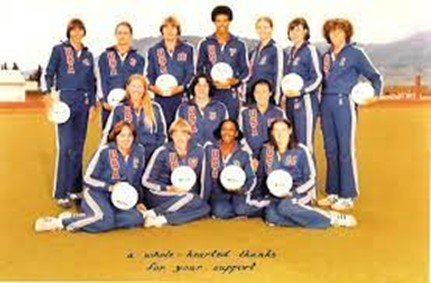
The Olympic Games this month in Tokyo happen nearly 50 years after volleyball’s first appearance in the Olympics in the same city.
Qualifying for an Olympics in volleyball is harder than being part of the World Championships; 24 teams get slots into Worlds, but only 12 teams make the Olympics. With 221 member nations in the International Volleyball Federation (FIVB), more than 200 national teams watch the tournament from home and wait four years for another chance.
During this year’s Games, a special group of athletes will gather in the Colorado mountains to watch the Tokyo event. The 1980 Olympic Women’s Team was the only volleyball team to qualify for this Olympics in the period between 1968 and 1984. However, they were unable to compete because of the U.S. boycott.
I share this info as these pioneers should be known by all in our volleyball family. Given their 40th anniversary reunion, I’m focusing on the 1980 Women’s Team, as the men did not qualify. This group of athletes was one of the first resident teams to live in the new Olympic Training Center in Colorado Springs, starting in 1977.
The city embraced the women, who played teams like East Germany and China in the City Auditorium. They trained in a low-ceiling Quonset hut on the former ENT Air Force Base that the city took over and rented to the Olympic Committee for $1 a year. The hut only fit one court and forced them to learn to dig low as the height was about 18 feet.
Ranked No. 1 or No. 2 in the world, the team looked like they might become the first ever U.S. team to medal in the Olympics after training year-round together for three years. Their theme song was Sister Sledge’s “We are Family.” But, on March 21, 1980, President Carter announced that the U.S. would boycott the 1980 Games in Moscow due to the Soviet Union’s 1979 intrusion into Afghanistan.
Dreams dashed, the team was invited to the White House and received medals for their qualification. More than half the team went on to win a silver medal in 1984. Since then, many of the team have given back to the sport by playing or coaching. Players included:
Flo Hyman: Flo later starred professionally in Japan, only to pass away on the court in 1986 of undiagnosed Marfan Syndrome. Her passing led to a multipage article in Sports Illustrated noting the traits of this syndrome (e.g. very tall, extra-long fingers/toes, nearsightedness, concave chest). which led to dozens of other sportsmen and women being diagnosed and withdrawn from physical activity for their safety. A key trait of Marfan’s is a stretched/weakened aorta valve, which in Flo’s case burst while she was playing. National Girls and Women in Sport Day in early February is named in Flo’s honor. Watch our video honoring Flo.
Debbie Green was an assistant coach at Long Beach State for more than two decades.
Debbie Landreth Brown coached at both Arizona State and Notre Dame.
Laurie Flachmeier Corbelli coached collegiate for more than 20 years, including at Texas A & M.
Rita Crockett is currently head coach of both the indoor and beach teams at Florida International University.
Sue Woodstra coached for years collegiately and worked with the 2008 U.S. Olympic Women’s Team.
Laurel Brassey became the starting setter for the 1988 team after a seven-year break from the national team program, playing pro in Italy and coaching collegiately at the University of New Mexico.
Feel free to share your thoughts on this special 1980 team below, or email me at john_kessel@msn.com and I will share them with the team while they stay with my wife and I at our veteran/first responder retreat July 26-29.
